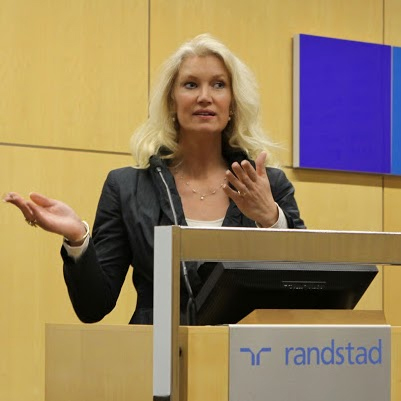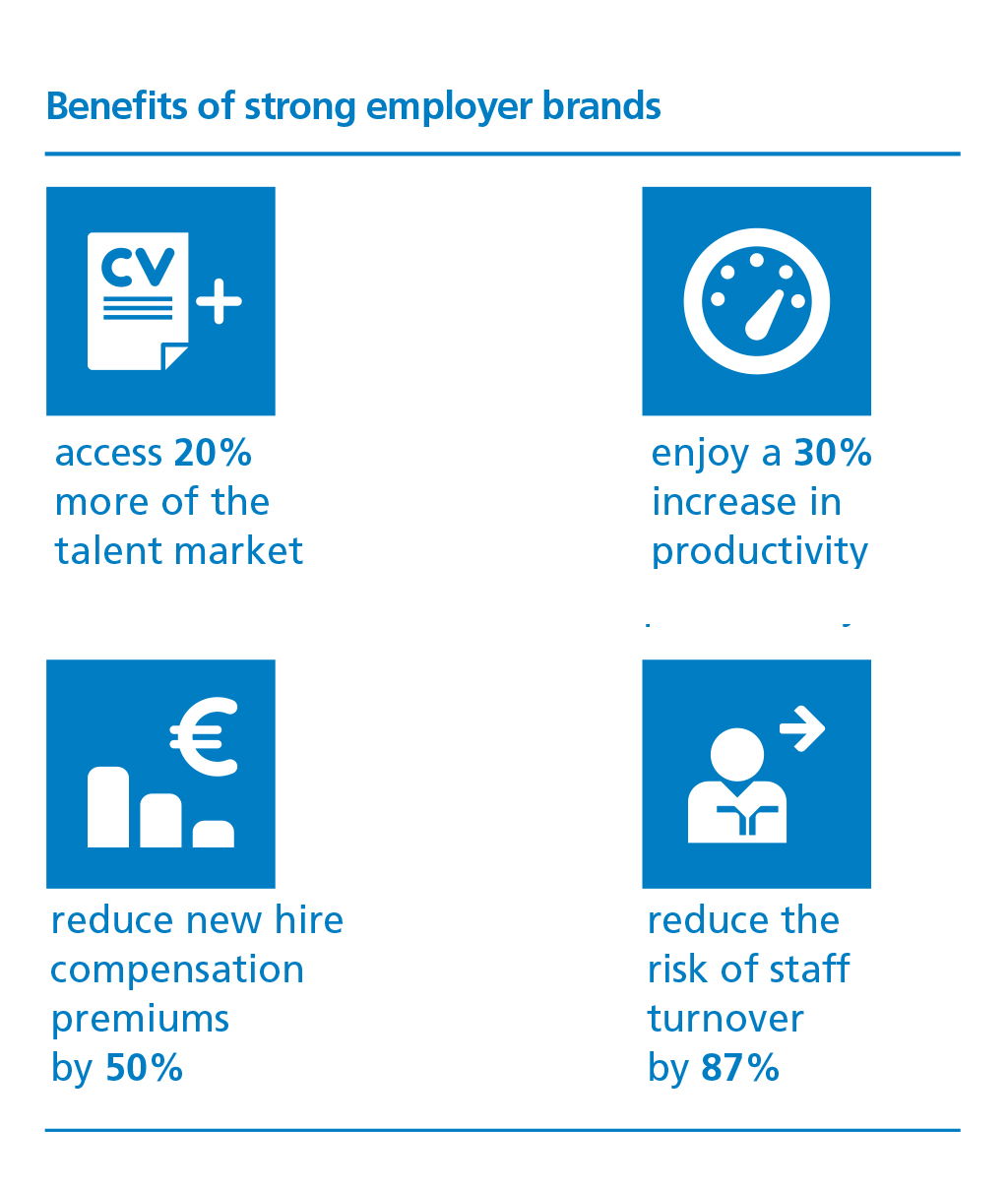
the future of work and its implications for talent engagement
Become a talent magnet by building a top brand and ensuring a true and reliable candidate experience
The world of work is changing rapidly, and technological advances are permeating all aspects of the workplace. Universities are preparing students for jobs that currently do not exist, and for using technologies that have not yet been invented. Several industries are already witnessing acute skill gaps. At the same time, talented workers are becoming increasingly mobile, and their behaviors are changing fast, which makes talent attraction and sourcing increasingly challenging. With talent already the No. 1 priority for CEOs, the strategic role of sourcing is even more significant in driving a company’s success than ever before.
The statistics speak for themselves
Jobs for life no longer exist. Some 25% of workers have been with their current employer for less than a year, and it is estimated that today’s students will have 10 to 14 jobs before their 38th birthday. But the jobs are changing fast too: the Top 10 in-demand jobs in 2011 did not even exist in 2004. And ever-growing technology will significantly change the way people work. It is estimated that, by 2020, mobile will be the world’s primary connection tool. People will no longer need to look for jobs; the jobs will find them, through social media and online networks. And with an expected global shortage of skilled workers of 46 million by 2030, employers will need to focus on attracting the scarce talent available and retaining the best and brightest.
 Sourcing challenge
Sourcing challengeThe circumstances in which HR and talent acquisition specialists are working are becoming more challenging every day. It is one thing to keep up with all the latest sourcing technologies, innovations and trends, but if the pond you are fishing in is getting emptier, there’s not much to catch. For example, when Airbus recently received a huge order to build a large number of new airplanes, recruiters had a hard time finding aeronautic engineers. And if you cannot find the people to carry out the work, big orders are next to worthless. In other words, successful talent sourcing is of strategic importance to companies, and it is the responsibility of expert talent acquisition professionals to step up to this challenge and help companies find the people they need. It is not just about finding them today, it is about engaging them early on, so you can deliver the right people for the right jobs in four or five years’ time. This also means being aware of developments and statistics in a company’s workforce, so that you are not taken by surprise when the vacancies arise.
The importance of a strong employer brandToday, there are more than 200 million blogs worldwide, and 34% of them are posting opinions about products and brands. It is generally believed that 90% of consumers trust these opinions – so it clearly matters what people are saying about your brand. It shapes your brand reputation and also makes a difference in attracting talent. If people like what they hear about a brand, they will also be more inclined to work for that brand. And once they are in, you need to maintain a great work environment that makes them want to stay. A good example of a strong employer brand is Google. For their last 4,300 vacancies, they had almost 3.4 million applicants – an average of 790 applications per position. In stark contrast to this, a logistics company looking for IT staff with similar skills hardly received any applications.

The 2014 Randstad Award research report on the world’s most attractive large employers revealed that one way to make sure you are attractive to candidates is to give them an honest and reliable experience during the recruitment process. If the message a company conveys on its website does not match up with the candidate’s experience at their first interview, there is a good chance they will look elsewhere.
Creating a strong employer brand may not be a talent sourcer’s main responsibility, but they are a key stakeholder in communicating and sharing a company’s employee value proposition. This is why sourcers should not only be aware of a brand’s image in the labor market, but also advise their leadership or clients on how they can improve it. And most importantly, they need to use the company brand, employer brand and workplace culture to engage and convert the growing number of passive candidates who are not actively looking for another job.
Holistic approach
Given current developments, talent acquisition specialists will need to broaden their horizons and take a more holistic approach to sourcing. Besides identifying and engaging with the right people at an early stage in order to build a well-filled talent pipeline, sourcers should also expand their scope to include not just permanent workers but also more flexible workers, such as independent contractors. Companies today need to think about the optimal balance of permanent and contingent workers to create the best workforce for the future. In addition, with shifting markets, non-static client bases, and a highly unequal distribution of talent availability across the globe, they will increasingly need to broaden their geographical scope. For example, huge numbers of Chinese students now enter the job market with Ivy League education under their belt. And finally, companies also need to widen their scope in terms of time, proactively spotting and engaging with talent at a very early stage – when they are still at school or university, for example. Taking a more holistic approach to sourcing could mitigate the effects of the volatility in the labor market landscape, and be of strategic importance to employers.
Enter the board room
More than ever before, the role of HR and talent acquisition specialists needs to be taken seriously in the board room. If they make sure they have a good overview of current and future developments, they can make short-term and long-term plans, and advise company leaders on the opportunities and impossibilities of certain strategic decisions when it comes to the workforce. For example, a management team may decide to build a Shared Service Center in eastern Poland to save costs. This may sound like a great decision from a tax and financial point of view. But if you cannot find the right people to actually run the center, it is a very bad decision. So, if sourcers know where in the world you can find talent with specific skills, they can advise boards on the best locations to build their facilities. To arrive at this board-level role of sourcing, talent acquisition leaders should not shy away from proactively taking the first step and letting their voice be heard. It is their responsibility to place talent at the very top of a company’s strategic agenda, thereby facilitating industry leadership.


